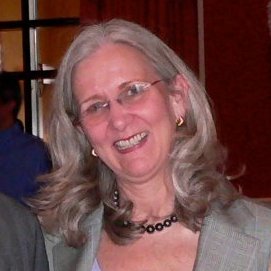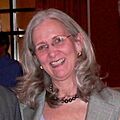Arlene Harris (inventor) facts for kids
Arlene Joy Harris, born on June 6, 1948, is a super smart inventor and business leader. She helps create new companies, especially ones that use wireless technology. People know her as a pioneer in mobile phones and other wireless gadgets. She was the first woman to join the Wireless Hall of Fame in 2007. In 2017, she was also added to the Consumer Technology Hall of Fame.
Arlene Harris has started many successful companies. She helped create some of the first rules for the cellular industry. She also holds several patents for wireless communication ideas. Her companies made big changes, like creating systems for cellular billing. They also launched the first prepaid cellular service. She even helped develop the first automatic wireless management systems. A famous invention she led was the SOS phone, later called the Jitterbug. This phone was made with Samsung in 2006. It was designed to be easy to use for everyone.
Contents
Arlene Harris: A Wireless Pioneer
Arlene Harris grew up in Los Angeles. She started her career very young, at just 12 years old. She worked as a mobile telephone switchboard operator for her family's business. This company was called Industrial Communications Systems (ICS), Inc.
Her Latest Innovations
Supporting New Ideas
Arlene Harris is a founding director of the Don Norman Design Award. This award celebrates great design.
Wrethink: Protecting Your Privacy
Arlene Harris is currently working on a company called Wrethink. This high-tech company helps people keep their personal information private. It also helps families organize and manage their digital lives.
Wrethinking Foundation: Helping Others
Arlene Harris and Martin Cooper started the Wrethinking foundation. This foundation supports new technology companies. It also helps non-profit groups that do good for society. Wrethinking provides money and support for Internet Safety Labs (ISL). ISL works to make sure software and devices are safe for users. The foundation also helps many other non-profit organizations.
Accessible Wireless: Making Connections Easy
In 2001, Harris bought a cellular company called Accessible Wireless. This helped her offer phone services for people who didn't use their phones much. Accessible Wireless made it possible for GreatCall to offer its services later on. Other phone companies at the time didn't support low-usage plans.
GreatCall: Phones for Everyone
GreatCall was a company founded by Arlene Harris. It was bought by Best Buy in 2018. Harris came up with the idea for GreatCall to help Best Buy enter the connected health market. She led the creation of the Jitterbug phone with Samsung. The Jitterbug was a simple cellular phone. It was made for people who found new technology tricky, like older adults.
The Jitterbug phone was very popular. The New York Times called it one of the "Top 10" technology ideas of 2006. It was also a finalist in a competition at the Consumer Electronics Show in 2007. Reader's Digest named it one of its "Top 100 Products." In the same year, GreatCall won the Andrew Seybold Choice Award for "Best New Company." This award came from the Cellular Telecommunications Industry Association (CTIA). GreatCall also won the Stevie Award for "Best Small Business in 2008."
In 2009, GreatCall bought Mobiwatch. This company focused on mobile emergency response services. GreatCall then used this technology to expand its connected health solutions.
Wireless History Foundation
Arlene Harris helped start the Wireless History Foundation in 2008. She created it with Liz Maxfield and Judith Lockwood Purcell. This non-profit group works to save and share the history of the wireless industry. Arlene Harris is still on its board of directors.
Early Wireless Innovations
SOS Wireless Communications
In 1994, Harris founded SOS Wireless Communications. This company created a special phone and services. It was designed for urgent and occasional calls. It was mainly sold to older Americans.
Life Page: Helping Patients
In 1981, under Harris's leadership, ICS developed the first wireless healthcare application. It was called Life Page. This program gave pagers to patients waiting for organ transplants. She later helped expand this program to other wireless operators.
Building a Global Paging System
Under Arlene Harris and her family, ICS became the largest paging system in the world for one city. ICS was also one of the first businesses to use computer systems to manage customer services. Today, we call this Customer Relationship Management (CRM).
ICS also supported the first wholesale wireless service in 1972. This meant they sold services to other companies, who then sold them to customers. This helped ICS grow a lot. Because of this success, the U.S. Federal Communications Commission (FCC) made it a rule for cellular companies to use this wholesale model in 1982.
Cellular Business Systems, Inc. (CBSI)
In 1983, Harris co-founded Cellular Business Systems, Inc. (CBSI). This company was later sold in 1986. At CBSI, Harris helped create a billing and CRM service. This service is now known as "software-as-a-service" (SAAS). CBSI also developed the first automatic systems to activate cellular phones. These systems are now used worldwide to turn on phones instantly in stores.
Harris was also part of an FCC committee. This group helped create rules for how cellular companies would bill customers who used their networks in different areas. Their work led to the Cellular Inter-carrier Billing Exchange Record (CIBER). This system is still used across the cellular industry.
Subscriber Computing, Inc.: Prepaid Phones
In 1986, Harris founded Subscriber Computing, Inc. This company was later bought in 1998. Subscriber Computing, Inc. built systems for the biggest paging companies in the world. These systems were the first to combine billing for cellular and Internet communications. They worked with major companies like Motorola and British Telecom.
In 1988, Subscriber Computing, Inc. created a way for people with low or no credit to get cellular service. This is now known as "prepaid" cellular service. Prepaid phones are now a very popular choice for many people. This invention helped cellular phones become popular in countries where it was hard to get credit. Harris's team also used similar ideas to create systems that stopped people from using stolen cellular phones. This helped prevent companies from losing money.
Cellular Pay Phone, Inc. (CPPI)
In 1986, Harris also started Cellular Pay Phone, Inc. (CPPI). Here, she created her first patented invention. It was a special cellular phone and a system to manage it. This made CPPI the first company to offer cellular service with automatic credit card payments. This system was used by GTE Mobilnet for their ViaCall service. ViaCall provided pay cellphones in public places like limousines, trains, and even oil rigs.
Dyna LLC: Incubating New Ideas
In 1986, Harris launched Dyna LLC in Chicago, Illinois. Later, she moved the company to Del Mar, California. Dyna LLC helps new companies and entrepreneurs develop their ideas. It acts like an "incubator" for new businesses.
Images for kids
See also
 In Spanish: Arlene Harris (inventora) para niños
In Spanish: Arlene Harris (inventora) para niños



